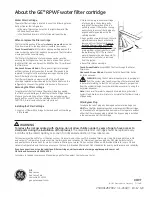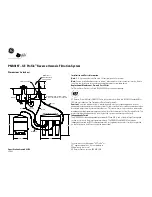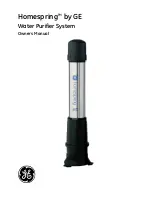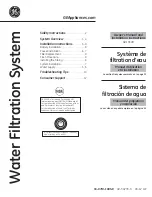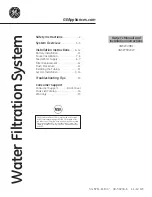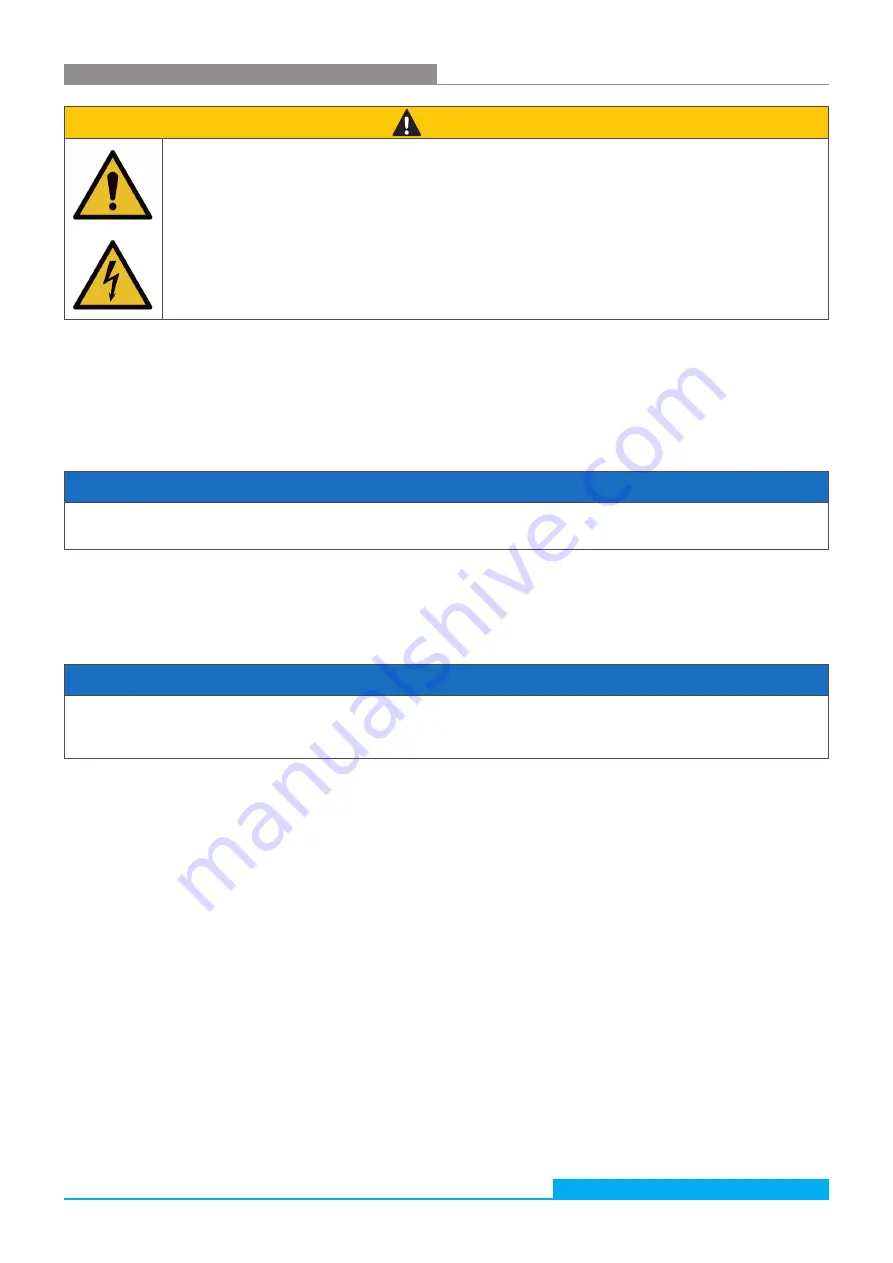
Subject to change · 27897500 · 10.2016 · EN
Page 15
www.argo-hytos.com
9. Operation
Exposure to spilled oil
Injury - risk of slipping
›
If oil leaks, the oil-covered area must be shut of immediately and covered with an oil binding medium
(risk of slipping).
Static charge
Sparking
›
There is a risk of static charge when using poorly conducting hydraulic or lubricating oils.
In this case, please consult the manufacturer.
9.1
Filtering hydraulic fluids in the bypass flow
1. Connect the filter unit to a power source.
2. Place the suction line into the container of the machine or system (e.g. hydraulic tank).
3. Place the pressure line of the pressure limiting valve in the container of the machine or system (e.g. hydraulic tank).
4. Turn on the power supply and plug in the mains plug.
5. Check the oil flow on possibly insufficient immersion depth of the suction pipe in the oil tank.
NOTE
Faulty insertion of the discharge pipe
›
At the beginning of the filtration, filling of the off-line filter unit may take a few seconds.
6. Using the clogging indicator, check the element for clogging at operating temperature of the medium used.
7. At the end of filtration, pull the suction strainer out of the container of the machine or unit (e.g. hydraulic tank) and draw in
air for max. 30 seconds.
Thus, residual oil from the filter housing and the lines above oil level will be returned via the discharge pipe into the tank of
the machine or unit.
8. Turn off the power supply and unplug the mains plug.
NOTE
Reaching the maximum cleaning performance
›
In order to prevent a short circuit of the oil flow, the distance between the suction and pressure connection should be kept as
large as possible.
CAUTION






























